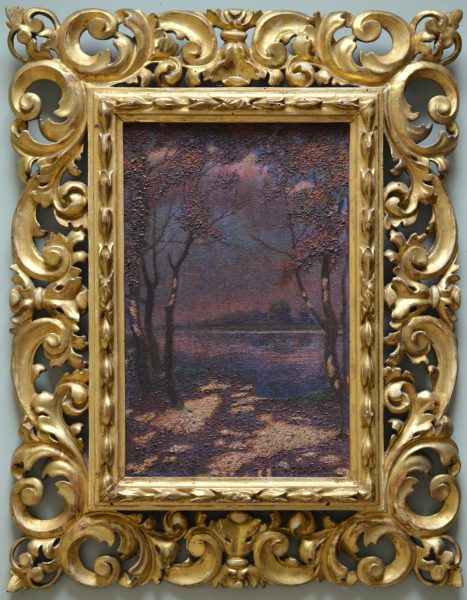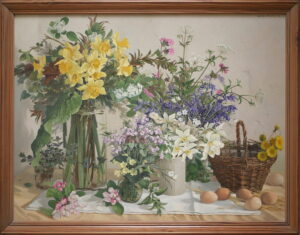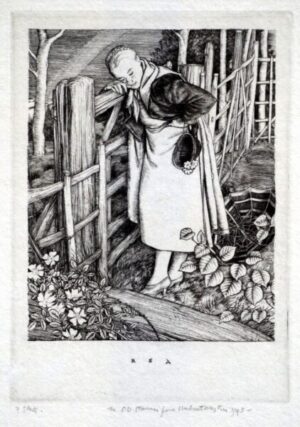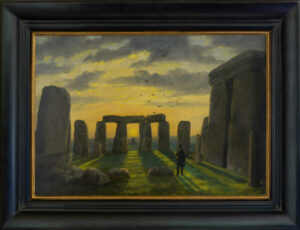Description
“The Fall o’ The Year” is reminiscent of work by artists such as Pissarro and the Italian artist Vittore Grubicy de Dragon. Titles for Penn’s early work and his use of a 19th century Florentine frame reflects his interest in continental art of the of the late 19th and early 20th century. The painting is indistinctly signed, Walter Penn and looks to be dated 17 (1917). The label on the reverse suggests that the painting may have been submitted but possibly rejected as no such title can be found in the summer exhibition catalogues. Unless the title was changed to “Mid-day in Provence” for his exhibit in 1927, it would seem unlikely the picture was exhibited at the R.A.
From 1912 to 1945 Walter Penn exhibited a total of 5 works at the Royal Academy. Between 1912 and 1929 when living at The Whym in Bosham, Chichester, he exhibited 3 paintings;- 1912., No.1101 Stones;- 1927., No. 907 Mid-day in Provence;- 1929., No. 719 Place des Ramparts, St. Tropez, Var.
The label on the back implies the frame was supplied and delivered to the R.A. by Charles Henry West 1895-1947, trading from 117 Finchley Road, London, 1901-1960. As an artists’ colourman, picture framer and gilder, West advertised ‘Power-driven machinery’ and offered ‘Vans to all Exhibitions’ (The Year’s Art 1903). In 1934, he advertised as ‘Artists’ Colourman, Exhibition Agent, Frame Maker’, reproducing a view of his picture frame showroom (The Artist, vol.7, March 1934), and claiming, ‘The framing of your R.A. picture will provide no problem if placed in the hands of Chas. H. West, who has specialised in this class of work for the past 50 years. He holds very large stocks of mouldings of all descriptions, and a vast number of frames of all sizes for selecting purposes’. The Sheffield artist, Stanley Royle, gave C.H. West as an accommodation address for his Royal Academy exhibits, 1934-38, as did Adrian Allinson, 1933-35.



